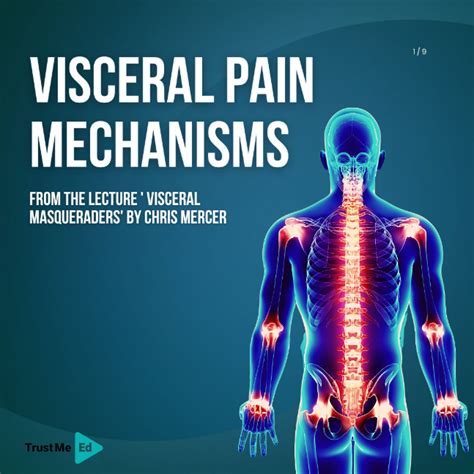Intro
Ease muscle pain with 5 effective methods, including relaxation techniques, exercise, and massage, to reduce muscle soreness, inflammation, and stiffness, promoting overall muscle relief and wellness.
Muscle pain can be a debilitating and frustrating experience, affecting daily life and overall well-being. Whether caused by intense physical activity, injury, or underlying medical conditions, finding effective ways to manage and alleviate muscle pain is crucial. With numerous treatment options available, it's essential to explore and understand the various methods that can provide relief. In this article, we will delve into the world of muscle pain management, discussing the importance of addressing this issue and the benefits of implementing a comprehensive approach to ease discomfort.
Muscle pain, also known as myalgia, can manifest in different forms and intensities, ranging from mild soreness to severe, debilitating pain. It can be localized to a specific area or widespread, affecting multiple muscle groups. The causes of muscle pain are diverse, including overuse or strain, poor posture, medical conditions such as fibromyalgia, and even certain medications. Understanding the underlying cause of muscle pain is vital in developing an effective treatment plan. By acknowledging the complexity of muscle pain and its various triggers, individuals can take the first step towards finding relief and improving their quality of life.
The impact of muscle pain on daily life cannot be overstated. It can disrupt sleep patterns, limit mobility, and even affect mental health, leading to anxiety and depression. Moreover, if left unaddressed, muscle pain can lead to chronic conditions, further exacerbating the issue. Therefore, it's crucial to adopt a proactive approach to managing muscle pain, incorporating a combination of lifestyle modifications, therapeutic interventions, and self-care practices. By doing so, individuals can not only alleviate their discomfort but also enhance their overall health and well-being.
Understanding Muscle Pain

Types of Muscle Pain
There are several types of muscle pain, each with distinct characteristics and causes. These include: * Acute muscle pain: Typically develops suddenly, often as a result of injury or overuse. * Chronic muscle pain: Persists over time, sometimes becoming a long-term condition. * Referred muscle pain: Occurs when pain is perceived in a location other than the actual source of the pain. * Muscle cramps: Involuntary muscle contractions that can be painful and debilitating.5 Ways to Ease Muscle Pain

Additional Tips for Managing Muscle Pain
In addition to these five methods, several other strategies can help alleviate muscle pain: * **Maintain a healthy weight**: Excess weight can put additional strain on muscles, exacerbating pain. * **Improve posture**: Good posture can reduce muscle strain and alleviate pain. * **Get enough sleep**: Adequate sleep is essential for muscle recovery and pain management. * **Manage stress**: Stress can contribute to muscle tension and pain; engaging in stress-reducing activities, like meditation or deep breathing, can help mitigate this effect.Preventing Muscle Pain

The Role of Nutrition in Muscle Pain Management
A balanced diet rich in essential nutrients can play a significant role in managing muscle pain. Certain foods, such as: * **Omega-3 fatty acids**: Found in fatty fish, flaxseeds, and walnuts, these anti-inflammatory compounds can help reduce muscle pain and inflammation. * **Antioxidants**: Vitamins C and E, polyphenols, and other antioxidants can help mitigate oxidative stress and inflammation, contributing to muscle pain. * **Magnesium**: This mineral is essential for muscle function and relaxation; inadequate magnesium levels can contribute to muscle cramps, spasms, and pain.Seeking Professional Help

When to Seek Emergency Help
In rare cases, muscle pain can be a symptom of a more serious underlying condition. If any of the following occur, seek emergency medical attention: * **Sudden, severe pain**: If muscle pain develops suddenly and is severe, it may indicate a serious condition, such as a muscle rupture or compartment syndrome. * **Numbness or tingling**: If numbness or tingling accompanies muscle pain, it may indicate nerve damage or compression. * **Weakness or paralysis**: If muscle pain is accompanied by weakness or paralysis, it may indicate a neurological condition, such as a stroke or spinal cord injury.Conclusion and Next Steps

We invite you to share your experiences and tips for managing muscle pain in the comments below. If you found this article helpful, please consider sharing it with others who may be struggling with muscle pain. Together, we can work towards creating a community that supports and empowers individuals to take control of their health and well-being.
What are the most common causes of muscle pain?
+Muscle pain can be caused by a variety of factors, including overuse or strain, poor posture, medical conditions such as fibromyalgia, and certain medications. Understanding the underlying cause of muscle pain is crucial in developing an effective treatment plan.
How can I prevent muscle pain?
+Preventing muscle pain involves incorporating preventive measures into daily life, such as warming up and cooling down before and after exercise, strengthening core muscles, improving flexibility, and avoiding overuse. A balanced diet rich in essential nutrients can also play a significant role in preventing muscle pain.
When should I seek professional help for muscle pain?
+If muscle pain persists, worsens, or is accompanied by other symptoms, such as numbness, tingling, or weakness, it's essential to consult with a healthcare professional. They can help diagnose the underlying cause of muscle pain and develop a personalized treatment plan.
What are some alternative therapies for managing muscle pain?
+Alternative therapies, such as acupuncture, chiropractic care, or massage therapy, may be recommended to complement traditional treatments. These therapies can help promote relaxation, reduce muscle tension, and improve overall well-being.
How can I manage chronic muscle pain?
+Managing chronic muscle pain involves a comprehensive approach, including medication, therapy, and lifestyle modifications. It's essential to work with a healthcare professional to develop a personalized treatment plan that addresses the underlying cause of pain and promotes overall well-being.
